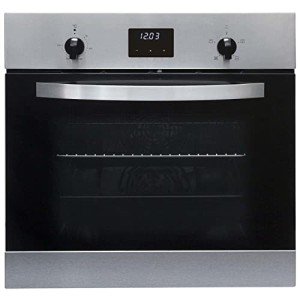Understanding Electric Ovens and Hobs: Your Guide to Cooking Efficiency
Electric ovens and hobs have transformed the cooking landscape, using home cooks and expert chefs a reputable, efficient, and consistent method to prepare meals. As Integrated Ovens And Hobs continue to influence home appliance style, the efficiency and functionality of electric cooking systems have actually significantly improved. This short article looks into the features, benefits, and considerations surrounding electric ovens and hobs, providing a detailed overview for anybody looking to update or invest in kitchen appliances.
What Are Electric Ovens and Hobs?
Electric ovens are kitchen devices designed for baking, broiling, roasting, and other cooking approaches that require regulated heat. They make use of electric coils or radiant heat aspects to produce and keep the preferred temperature level. Electric hobs, frequently referred to as electric cooktops, are flat surface areas with heating elements that allow pots and pans to be put directly on them for cooking.
Table 1: Key Differences Between Electric Ovens and Hobs
| Function | Electric Oven | Electric Hob |
|---|---|---|
| Primary Function | Baking, roasting, broiling | Heating pots and pans for cooking |
| Heating Method | Electric coils or radiant components | Induction, glowing, or ceramic components |
| Operation Temperature Range | As much as 500 ° F (260 ° C | ) Varies by style; typically lower than ovens |
| Cooking Styles | Versatile; ideal for numerous dishes | Mostly stovetop cooking techniques |
| Space Requirement | Generally built into cabinetry | Often standalone or integrated choices |
| Energy Consumption | Generally greater, depending on usage | More energy-efficient with induction hobs |
Benefits of Electric Ovens and Hobs
When considering electric ovens and hobs, it's important to comprehend their numerous benefits, which can improve the cooking experience.
1. Constant Heating
Electric ovens and hobs supply even and constant heating, which is essential for lots of cooking techniques. This guarantees that dishes prepare evenly, decreasing the possibilities of overcooking or undercooking certain locations of food.
2. Safety Features
Modern electric ovens and hobs come geared up with various security functions to prevent mishaps in the kitchen. For example, lots of models include automatic shut-off functions, hot surface indications, and child security locks.
3. Easy to Use
Unlike gas models, electric ovens and hobs are simple and easy to use. The simplicity of turning on a dial or pressing a button makes them available for cooks of all skill levels.
4. Versatile Cooking Options
With various cooking techniques possible, from baking to simmering, electric designs are flexible enough to accommodate a wide variety of culinary styles and choices.
5. Cleaning up and Maintenance
Electric ovens typically feature smooth surfaces that are simple to clean, especially designs with self-cleaning abilities. Hobs, specifically induction types, also offer a flat surface that is easy to clean down, making upkeep a breeze.
Popular Types of Electric Ovens:
- Conventional Ovens: Ideal for traditional baking and roasting.
- Convection Ovens: Circulate hot air for quicker, even cooking.
- Microwave Ovens: Use electro-magnetic radiation for quick heating and cooking.
- Toaster Ovens: Small counter top ovens for fast tasks.
Popular Types of Electric Hobs:
- Induction Hobs: Utilize electromagnetic fields for quick heating and energy efficiency.
- Glowing Hobs: Feature electric coils that warm up to prepare food.
- Ceramic Hobs: Offer a smooth surface and are simple to tidy.
Factors To Consider When Choosing Electric Ovens and Hobs
While electric ovens and hobs use various benefits, several factors ought to be taken into account to guarantee the right fit for your kitchen:
1. Area Availability
Evaluate the readily available kitchen space before purchasing. Determine whether you need an integrated model or a freestanding device, and determine the dimensions thoroughly to guarantee a great fit.
2. Cooking Needs
Determine your cooking habits and preferences. If you routinely bake big quantities or cook complex meals, think about an oven with sophisticated functions like convection settings or multiple racks.
3. Energy Efficiency
Try to find energy-efficient models that can assist in saving on energy bills with time. Energy Star-rated home appliances can be particularly cost-effective.
4. Spending plan
Set a realistic budget plan that accounts for both the initial purchase and ongoing operating expense. In addition to the appliance expense, aspect in setup and potential repairs.
5. Additional Features
Think about whether functions like wise technology, programmable settings, or steam cooking options are very important for your cooking style.
FAQ Section
Q: How do I tidy my electric oven?
A: Most electric ovens come with self-cleaning choices. If your model does not have this function, permit the oven to cool, then wipe down surfaces with a mixture of baking soda and water or an industrial oven cleaner.
Q: Is induction cooking safe?
A: Yes, induction cooking is thought about safe as the heating aspect only activates when compatible cookware touches with it, reducing the danger of burns.
Q: How long does it consider an electric oven to pre-heat?
A: Preheating times vary based upon the oven's model and temperature level setting however generally vary from 10 to 15 minutes.
Q: Can I utilize any cookware on an induction hob?
A: No, only ferromagnetic cookware works with induction hobs. Look for induction compatibility before use to avoid damage.
Q: What is the distinction in between a stove and a traditional electric oven?
A: A convection oven consists of a fan that circulates hot air, ensuring even cooking and decreased cooking times compared to a traditional electric oven, which does not have this function.
Electric ovens and hobs supply a contemporary solution to different cooking needs, providing performance and reliability in the kitchen. As consumers evaluate their choices, understanding the functions, types, and considerations will enable them to make informed choices. Whether one is a periodic cook or a cooking enthusiast, electric home appliances can enhance the overall cooking experience, bringing convenience and imagination to the table.

